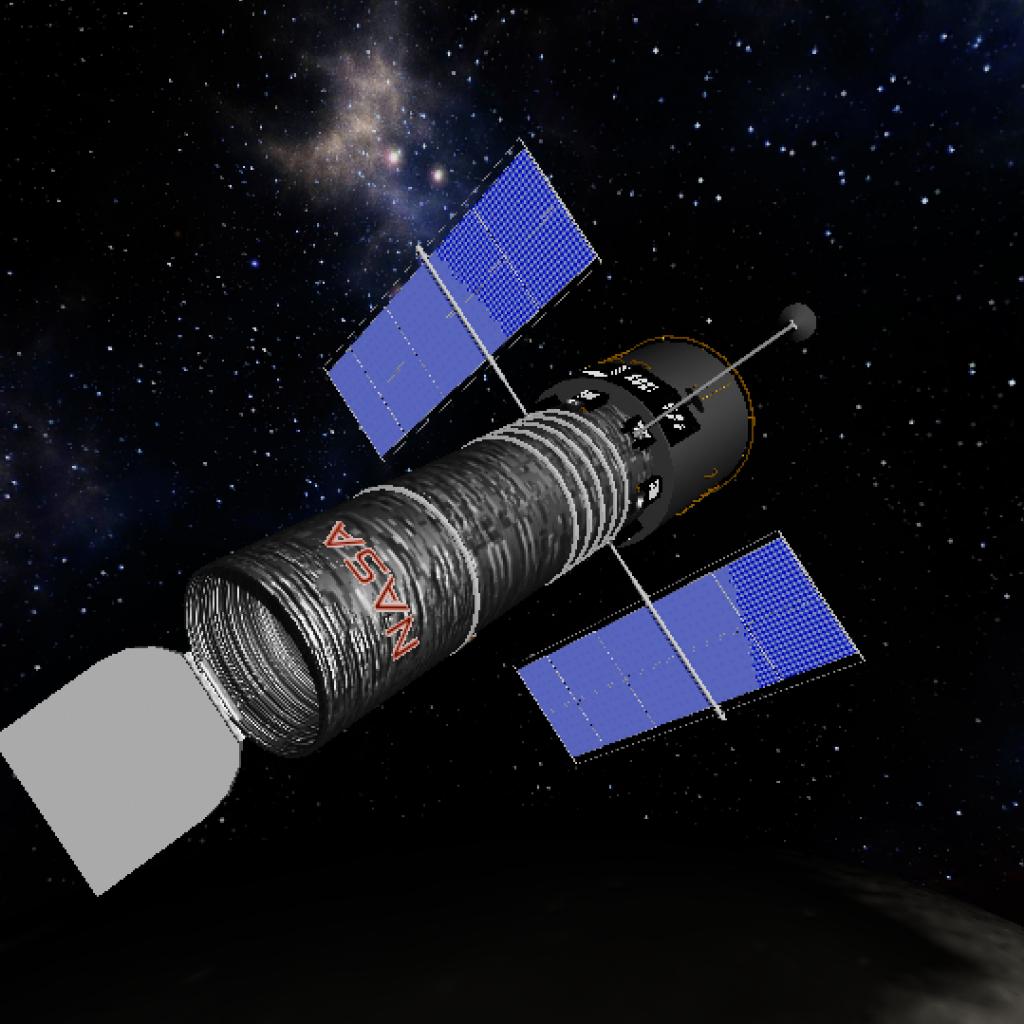ALL ACTIVATION
- AG 1: SOLAR PANEL
- AG 2: HIGH GAIN ANTENNA
- AG 3: APERTURE DOOR
HUBBLE SPACE TELESCOPE
The Hubble Space Telescope (often referred to as HST or Hubble) is a space telescope that was launched into low Earth orbit in 1990 and remains in operation. It was not the first space telescope, but it is one of the largest and most versatile, renowned both as a vital research tool and as a public relations boon for astronomy. The Hubble telescope is named after astronomer Edwin Hubble and is one of NASA's Great Observatories, along with the Compton Gamma Ray Observatory
EDWIN HUBBLE
Hubble features a 2.4 m (7 ft 10 in) mirror, and its five main instruments observe in the ultraviolet, visible, and near-infrared regions of the electromagnetic spectrum. Hubble's orbit outside the distortion of atmosphere of Earth allows it to capture extremely high-resolution images with substantially lower background light than ground-based telescopes. It has recorded some of the most detailed visible light images, allowing a deep view into space. Many Hubble observations have led to breakthroughs in astrophysics, such as determining the rate of expansion of the universe.
Space telescopes were proposed as early as 1923. Hubble was funded in the 1970s and built by the United States space agency NASA with contributions from the European Space Agency. Its intended launch was 1983, but the project was beset by technical delays, budget problems, and the 1986 Challenger disaster. Hubble was finally launched in 1990, but its main mirror had been ground incorrectly, resulting in spherical aberration that compromised the telescope's capabilities. The optics were corrected to their intended quality by a servicing mission in 1993.
Hubble is the only telescope designed to be maintained in space by astronauts. Five Space Shuttle missions have repaired, upgraded, and replaced systems on the telescope, including all five of the main instruments. The fifth mission was initially canceled on safety grounds following the Columbia disaster (2003), but after [NASA administrator](https://en.m.wikipedia.org/wiki/Administrator_of_NASA Michael D. Griffin approved it, it was completed in 2009.
1 Comment
4 Upvotes
Log in in to upvote this post.








Does it zoom?